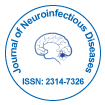An Unusual Presentation of Guillain -Barre Syndrome: A Case Study.
Editor assigned: 01-Jan-1970 / Reviewed: 01-Jan-1970 / Revised: 01-Jan-1970 /
Abstract
Guillain-Barré syndrome (GBS) is an acute postinfectious polyneuropathy characterized by symmetric and ascending flaccid paralysis. GBS most commonly presents with symmetrical proximal muscle weakness of the lower extremities as the first sign and moves upwards as ascending paralysis. This case presented with asymmetrical descending paralysis and altered sensorium, which made the initial diagnosis quite challenging. CSF reports revealed an albuminocytologic dissociation that supported the diagnosis of post-infectious Guillain-Barré syndrome. Nerve conduction studies revealed an abnormal with increased F wave latency, suggestive of right upper limb sensory and lower limb motor axonal and demyelinating neuropathy. The patient was treated with IVIG and other supportive treatment. The patient showed significant improvement within two weeks. Background: Guillain-Barré syndrome (GBS) can be described as a collection of clinical syndromes that manifests as an acute inflammatory polyradiculoneuropathy with resultant weakness and diminished reflexes. Rarely does the disease manifest with descending paralysis. We present a case of GBS that on the initial presentation had symptoms of altered sensorium and asymmetrical descending paralysis. Objective: An unusual presentation Conclusions: Guillain Barre Syndrome often presents with a wide range of symptoms, although it usually presents with symmetrical ascending paralysis, this case presented with asymmetrical descending paralysis and altered sensorium, which made the initial diagnosis quite challenging.
Keywords: Acute inflammatory demyelinating polyneuropathy; Acute motor axonal neuropathy; Acute paralytic neuropathy; Guillain–Barré syndrome; IVIG; Autoimmune
Introduction
A 56-year-old man who is a known case of hypertension and type 2 diabetes mellitus presented to the department of Internal medicine with complaints of fever, cough, and breathlessness for 1 week. The fever was an intermittent type, moderate grade, and was associated with chills and rigors. He also complained of cough for one week, which was insidious in onset, gradually progressive, associated with sputum production, which was scanty in quantity, whitish in color, and non-blood tinged. He additionally reported breathlessness during that period, which also was insidious in onset, and gradually progressive. Initially, it was grade 2 but progressed to grade 4 according to MMRC classification. On admission, the pulse rate was 80 bpm, bp 130/80, temperature afebrile (97.4 0 F [36.30 C]), he was tachypneic with a respiratory rate of 40 cpm, and saturation of 96% on room air. On auscultation, we found bilateral bronchial breath sounds with bilateral basal crepitations. A chest x-ray was done and revealed bilateral consolidation in the lungs. He was suspected to have COVID 19 infection and was managed in the COVID 19 isolation ward, a throat swab was sent for RT-PCR and was negative. All routine investigations were done, his complete blood panel values showed an elevated WBC count-15,900, hemo globin14 g/dl, platelets- 2.78, ESR- 30, RBS- 395, Urea- 85, Creatinine- 0.9, sodium- 139 mmol/L, potassium- 5.6 mmol/L, chloride- 102 mmol/L, total bilirubin – 0.78, albumin- 3.64, globulin 3.18, SGOT- 37.97, SGPT- 31.31. The following day, he was drowsy, tachypneic with RR 36 and his saturation decreased to 90% on 10L of oxygen so, he was shifted to the ICU for further management. His ABG reports showed hypoxia - pH – 7.492, pCO2 40.1, pO2 55.5, sodium 124 mmol/L, potassium 2.3 mmol/L and chloride of 102 mmol/L and bicarbonate 30.6 mmol/L. At this time a diagnosis of bilateral pneumonia was considered and he was treated for the same with azithromycin, his GRBS was monitored every 8th hour, and was treated with insugen R accordingly
Select your language of interest to view the total content in your interested language
Share This Article
Recommended Journals
Open Access Journals
Article Usage
- Total views: 3044
- [From(publication date): 0-2020 - Dec 07, 2025]
- Breakdown by view type
- HTML page views: 2187
- PDF downloads: 857
